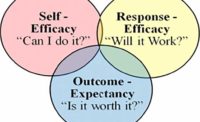This challenges the teaching of many behavior-based safety (BBS) consultants. Their ABC model (for antecedent-behavior-consequence) is often taught as if behavior is "triggered by antecedent stimuli" and motivated most effectively by "soon, certain, and positive consequences."
Let's consider the liabilities of this model of human behavior and the advantages of realizing there is a valuable "space" between environmental stimuli and people's responses.
Reflex behavior
A stop sign triggers drivers to apply their brakes, right? A behavioral audit causes workers to increase their safe work practices, right?The fact is that only involuntary behavior can be triggered by a stimulus like a stop sign. This occurs through natural or unlearned reflexive action, as when cold air causes you to shiver. Through a certain kind of learning called classical conditioning, previously neutral stimuli can also cause a reflexive response, as when viewing the cold weather outside triggers shivering.
But most daily behavior, including safe behaviors, is voluntary. It is not triggered by external stimuli. Antecedent conditions or events - activators - can provide direction for behavior, as when a safety sign tells people what PPE is required. Individuals decide whether to follow the directive, based largely on the consequences expected after performing the behavior. But the most influential consequences are not necessarily "soon, certain, and positive."
Powerful motivators
Negative and delayed consequences can be very powerful motivators, especially when certainty is a quality. Think about it. Believing that one more cigarette will assuredly cause sudden death ten years from now, a cigarette smoker would probably choose to stop smoking "cold turkey."If workers truly believed their risky work practice would lead to personal injury, they would likely avoid such behavior.
But there are exceptions. Some people actually continue to smoke cigarettes after suffering from emphysema and forced to use an oxygen tank to breathe. My point is that behavior cannot always be predicted by knowing the qualities of its consequences. People often choose to perform a certain behavior for personal consequences that are not obvious. Aaron Fuerstein, the 70-year-old owner, president, and CEO of a textile mill, was apparently not motivated by soon, certain, and positive consequences after a massive fire in 1995 destroyed his Malden Mill textile plant in Lawrence, Massachusetts. The workforce of 3,400 was jobless right before Christmas.
Feurstein did not close the business, pocket the $300 million in insurance, and walk away a very wealthy man. Instead, he sacrificed millions by paying his jobless employees for three consecutive months, including a $275 Christmas bonus per family. He risked many more millions by choosing to rebuild the plant in the same location, instead of relocating somewhere with lower wages.
When asked why he acted selflessly and against his own best interests in the CBS show "60 Minutes," Fuerstein replied, "Because it was the right thing to do."
Emotional intelligence
What we're talking about, what Aaron Fuerstein exhibited, is emotional intelligence. When it comes to wearing personal protective equipment, it's the ability to forego immediate rewarding consequences (such as comfort and convenience) for the possibility of a larger but delayed and uncertain benefit - avoiding personal injury. That's really the bottom line. Successful safety management requires that people develop the emotional intelligence to do the right thing, even when the soon and certain consequences are relatively negative. Actively caring for safety often means resisting the influence of the basic ABC principle of behavior-based safety. This clearly reflects Dr. Covey's critical lesson regarding that "space" of freedom and power between stimulus and response.Now, how are you going to use that space to do the right thing for safety?



